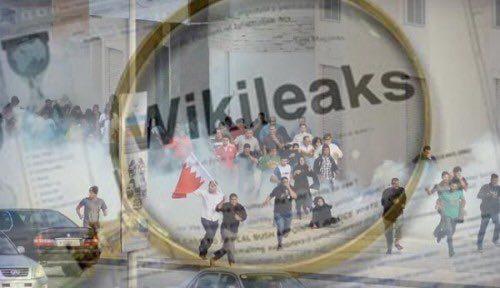Ahlul Bayt News Agency - One of the documents of the Saudi Ministry of Foreign Affairs that the WikiLeaks website disclosed recently revealed the ministry's categorization of newspapers and journalists in Bahrain. The document identifies the journalists as Sunnis, Salafist Sunnis or Shiites. The identification cards held by Bahraini journalists do not specify the sect they belong to. However, the Saudi Embassy in the Bahraini capital Manama who is most likely responsible for writing the document has its resources.
This doesn't mean that it doesn't receive wrong information. Obaidly Al-Obaidly is a pro-government Sunni leftist columnist yet the document identifies him as a Shiite. There were only two exceptions in the document; one was described as a national and another as a leftist. This document unveils one of the aspects of the Saudi sectarian mind that has made its mark on the general environment in Bahrain since 2011. This document as others paves the way for finding more knowledge of the policy of containment that was adopted in order to corner the February 14 protests.
Since the intervention of Saudi forces in Bahrain, Riyadh has shown more interest in the distribution of ethnicities in Bahrain, especially the Shiites. One of the cables on the WikiLeaks website, dated on October 1, 2011, months after the eruption of events in Bahrain, reveals that the presidency of the General Intelligence in Saudi Arabia requested information about the activities of Shiites in Bahrain, including "the methods used to infiltrate and take over the situation there."
This could be considered as a means of knowing the nature of the "enemy" against which Saudi Arabia has sent about 1,000 soldiers to suppress. For the Shiites have represented the backbone of protests in 2011. The Saudi requests; however, went far beyond gathering information about the nature of their opponent. It even went as far as blackmailing Bahrain by linking the aid it sends with receiving more information about the sectarian and segregating policies.
A document issued by the presidency of the Saudi General Intelligence reveals a request "to exclude any Shiite power from the projects that the kingdom offers to Bahrain." The cable specifically pointed out the Persian Gulf Arabian University and King Abdullah Medical City. It requested a study that shows the number of Shiite employees working in them "without settling for the academic reports issued by the Cultural Attache in Bahrain."
Another cable disclosed by WikiLeaks also revealed more hidden aspects of this sectarian policy. Saudi Arabia agrees to receive Bahraini students with scholarships on the terms that they are Sunnis.The Saudi Foreign Ministry said that it received a cable from its embassy in Manama after contacting the Bahraini side, confirming that "the Bahraini student (...) nominated for one of the scholarships allocated for Bahrain in Saudi universities is from a well-known Sunni family."
WikiLeaks also unveiled more of the destructive methods used by Saudi Arabia in Bahrain. A good example of that is a cable issued by the Saudi embassy in Tehran in which it calls for adopting a support plan for Salafist religious TV channels and direct its coverage by highlighting on Iran's interference in Arab countries like Bahrain, as part of a plan described in the cable as [the policy] of "Unmasking the Iranian media".
The Salafist religious channels are just a part of the plan, so even if al-Wisal channel was shut down, there are many other channels like it. As Amal Dunqul says: "For behind every dying Caesar, there is a new one."
/129
source : Bahrain Mirror
Tuesday
28 July 2015
9:02:23 AM
702756

One of the documents of the Saudi Ministry of Foreign Affairs that the WikiLeaks website disclosed recently revealed the ministry's categorization of newspapers and journalists in Bahrain.
